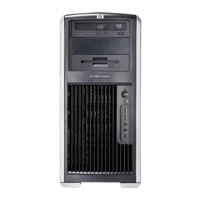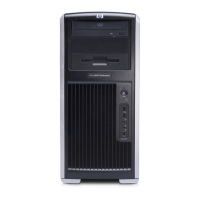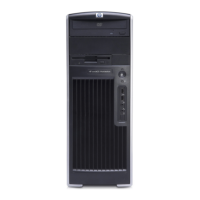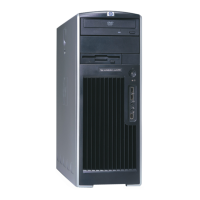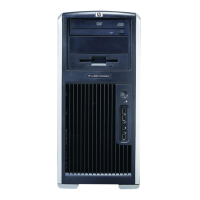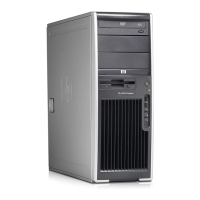BIOS ROM
The BIOS of the computer is a collection of programs stored as firmware in ROM. The BIOS ROM
includes such functions as POST, PCI device initialization, Plug 'n' Play support, power management
activities, and the Computer Setup Utility. BIOS supports the following systems and specifications:
●
Dual AMD Opteron 2xxx series processors
●
Up to DDR2-667 memory
●
HyperTransport setup and initialization
●
Chipset (includes NVIDIA nForce Professional 3600 and 3050 with NEC µPD720404 PCIe to PCI-
X bridge)
●
ACPI 1.0b with ACPI 2.0 extensions for 64-bit support, according to Microsoft Logo Requirements.
S1, S3, S4, and S5 with Remote Power On by way of LAN wake packet.
●
SMBIOS Spec 2.5 implementation and field definitions that accurately represent hardware
configurations and OEM ID
●
BBS 1.01
●
DOS and Windows based BIOS flash tools
●
Microsoft SDG 3.0 compliant as applicable
●
PMM 1.01 as applicable
●
MPS 1.4 as applicable
●
PXE 2.1
●
USB 1.1/USB 2.0
●
PCI 2.2 or later
●
“El Torito” Bootable CD 1.0
The BIOS ROM is a 1-MB FLASH unit. The runtime portion of the BIOS resides in a 96-KB block from
E8000h to FFFFFh (approximately). ACPI code and data take about 128 KB below TOLM (top of low
memory, the last RAM address below 4 GB).
Using Computer Setup (F10) Utility
You can call up the Computer Setup Utility during workstation restart or power on. To access the
Computer Setup Utility menu:
1. Power on or restart the workstation.
2. Press the F10 key as soon as your display is active and the message Setup appears in the lower
right corner of the screen.
NOTE If you miss the opportunity to press F10, restart the workstation and press F10
again. Or, you can press Ctrl+Alt+Delete prior to boot .
3. At first boot, select your language from the list, and press the Enter key. In the Computer Setup
Utility menu, five headings are displayed: File, Storage, Security, Advanced, and I/O.
ENWW Computer Setup (F10) Utility 25
